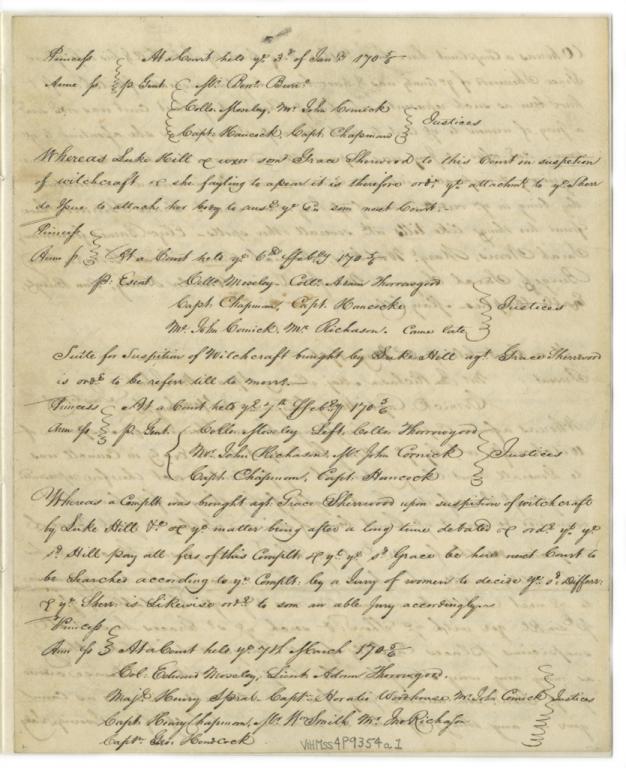The Virginia Historical Society's (VHS) first gift of manuscripts in 1833 included a transcript of the proceedings instituted against Grace Sherwood when she stood accused of witchcraft before the Princess Anne County Court in 1706 (pictured right). For several decades the alleged witch may have been one of the few representatives of her sex in the Virginia Historical and Philosophical Society.
As the manuscript collection grew in size, other historic figures joined Grace Sherwood, but living flesh-and-blood women did not become a visible force at the VHS, today the Virginia Museum of History & Culture (VMHC), until late in the nineteenth century. Since then, they have played important (if sometimes unacknowledged) roles in shaping the manuscript collection.
Today we recognize that the manuscript collection as a whole at the VMHC documents women's lives across a span of nearly four centuries. Documenting Women's Lives is intended to make the stories of Virginia women more accessible to researchers and to demonstrate how over the last four centuries the kinds of written material produced by or about women have changed.
This online guide was originally issued in published form through a project coordinated by Dr. Gail S. Terry and supported by a grant from the National Endowment for the Humanities an independent federal agency, and Gladys Krieble Delmas Foundation.
Each entry in Documenting Women's Lives contains several levels of description. A bold-face heading gives the title of the collection, item, or volume, dates of its full chronological span, size, and its VMHC call number, as well as indicates whether or not the item or collection is available on microfilm. Descriptions include names of individuals (followed by birth and death dates in parentheses) or agencies that generated the manuscripts, the places where they were produced, and the different types of documents contained within each collection.

